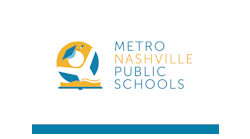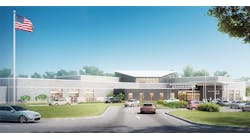Maintaining and improving security of facilities and grounds is a continual challenge for schools and universities. As administrators pursue upgrades of their campuses, they should try to incorporate improvements that enhance the safety of students, staff and visitors.
One of the strategies commonly embraced by education administrators is Crime Prevention Through Environmental Design (CPTED). By using security-enhancing elements in the design of a facility, schools and universities can provide a safer setting for learning without calling unwanted attention to the added security.
In a report, "CPTED 101," the National Clearinghouse for Educational Facilities (NCEF) delineates some of the steps school officials can take to bolster security. The steps can be categorized into three categories: natural surveillance; access control; and territoriality and maintenance.
To establish good natural surveillance on a campus and in its facilities, institutions must make sure that areas, especially places that are prone to trouble, are not hidden from view.
"Solid walls, tall shrubs, parked cars, outbuildings, sculptures, large signs, and other obstacles can block natural surveillance," the report says.
Steps for making a hidden area more visible include:
•Install openings or windows in solid walls.
•Replace solid walls with wrought-iron fencing.
•Remove benches or other welcoming features that draw people into a hidden area.
In a classroom, teachers should consider removing materials posted on windows that could prevent people from seeing what is going on outside. In classrooms outfitted with window blinds, staff members should position them so that activities outside the room can be monitored.
The layout inside a facility can enhance natural surveillance.
"The school receptionist is in a key position to conduct natural surveillance," the report says. "Try sitting at the reception desk. What can you see, and what is hidden? Is your back to the door? Is there a high counter, a computer monitor, a vase, a poster, or a solid wall blocking your view of people approaching the school? ... Look for ways to remove obstacles and expand visibility."
To control access to facilities more effectively, administrators can make simple adjustments. Limiting the number of ways in and out of the building means staff members don’t have to monitor entries constantly.
"Many schools have so many buildings, breezeways, unlocked doors, and open windows that access is essentially unrestricted, despite any rules to the contrary," the report says.
To avoid the problem, schools should alter entry points so that the doors lock automatically when closed and are used only as emergency exits.
Schools and universities also can take steps that project a feeling of territoriality, a sense of ownership of the space. Visible signs that inform visitors where access is restricted, direct them to the school office, or specify campus closing times can establish a sense of territoriality. Establishing a border with a fence or a hedge can help define boundaries and discourage unwanted visitors.
Keeping a school facility well-maintained can enhance the sense of territoriality by sending the message that those connected with the school take pride in its appearance and do not condone behavior that would detract from the school climate.
Better communication
Another strategy to help schools and universities improve security is to provide better ways for school personnel to communicate with each other and with emergency responders.
The NCEF report, "School Security Technologies," recommends ways to enhance campus communications.
"Everyone on campus should be able to call for help, pass along a timely warning, or receive a warning any time, anywhere," the report says. "A teacher shouldn’t have to choose between staying with students and calling for help."
A radio system can meet that need, but the NCEF warns that "off-the-shelf" systems are inadequate for the emergencies that might occur at a school.
"They don’t offer the many needed options and they don’t operate on the frequencies reserved by the FCC for school districts," the report says. "Anyone can use them, and as a result they will quickly overload in emergencies."
The NCEF says education institutions that have dozens or hundreds of potential users should use more sophisticated systems. "A ‘trunked’repeater or similar radio system … can function like cell phones and can permit messages to be broadcast to multiple users simultaneously," the report states.
Other recommendations on communications equipment from the NCEF:
•Analog radios may make better financial sense for most institutions. "Eventually radios may very well move entirely from analog to digital technology, but the costs are not yet competitive and in most cases, primarily based on costs, analog radios still make more sense," the report says. "At the same time, blindly accepting the lowest bids is a very risky approach."
•Schools should be aware that the range of some radios may not transmit properly in some building areas. "In those cases, consider running coaxial cabling from an omni-directional antenna, through a repeater on the outside of the building, into the secluded area," the report says.
•Before deciding to rely too heavily on cell phones, education officials should be aware of the possible drawbacks. Some school facilities may have dead spots, and the systems may not hold up during an emergency.
"Phone lines and cell-phone towers are both susceptible to overload and storm damage, which undermines reliability, just when they may be needed the most," the report says. "In some cases radios make more sense than cell phones, economically and logistically."
Kennedy, staff writer, can be reached at [email protected].



